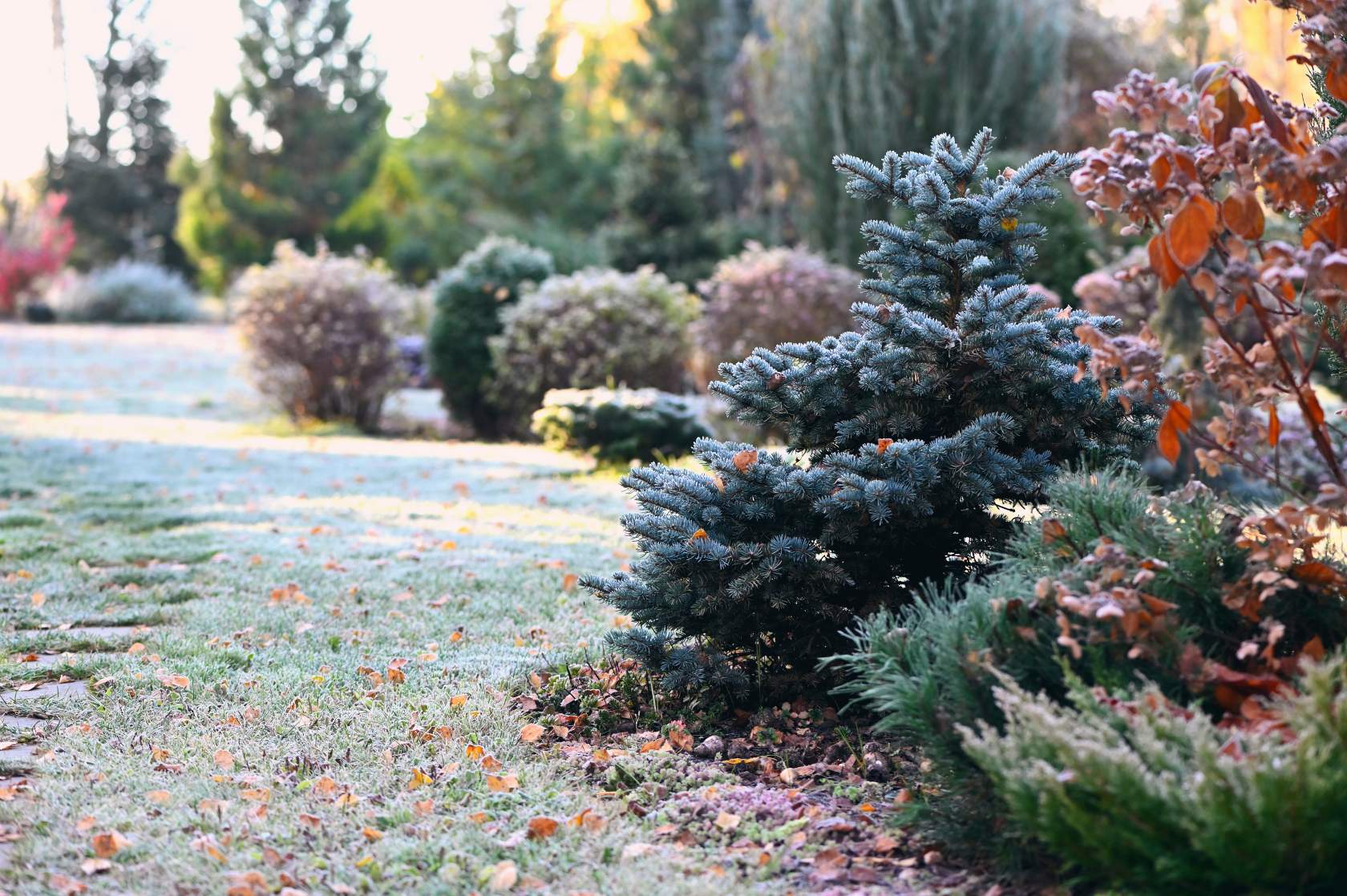

Chill factor
Protecting plants from the cold
Compared with showier seasons like spring and autumn, winter gets a bad rap when it comes to the garden. While the leaves may drop and growth slows down, it doesn’t mean there’s no life to be found. A bit of attention in the chillier months can set the garden up nicely for a flourishing spring ahead.
Winter can take its toll on plants, especially in the southern climes and higher country of Australia and New Zealand, where frosts are common. You can expect a light frost when temperatures drop to around -2 or -3°C. Anything between in the -4 to -5° range is considered moderate, while a heavy frost can be expected once the temperature drops to -6° or below – a relative rarity across most of ANZ.
Cold autumn nights can help plants prepare for winter, as stems and foliage harden early, enabling them to withstand the frost when it hits. You are most likely to see damage occur when new growth is appearing – so late winter and early spring are times to keep an eye on the weather forecast if you want to limit exposure.
What is frost damage?
Plant tissue freezes when exposed to low temperatures – usually overnight – which causes cells to shrink. Water is forced into the space between cells, where it freezes into ice. Come morning, when the temperature starts to rise, the ice thaws and is reabsorbed back into the plant cells. While there is less chance of damage when this process happens quickly, it most often happens slowly enough that cells become susceptible to dehydration and suffer from frost burn damage.
What plants are susceptible?
In general, fruiting and flowering plants aren’t that fond of extreme cold and are unlikely to survive a frost Of course, there are flowering exceptions – native species including several varieties of Acacia, Banksia, Callistemon and Grevillea all do well, as do imports like Azaleas, Agapanthus, Crepe Myrtle and Hebe.
While plenty of vegetables won’t enjoy the cold including beans, eggplant, pumpkin, tomatoes, and zucchini, some cool season veggies – like broccoli, radish and onions – are hardy enough to handle a frost without damage. Visit your local nursery or speak with a landscaper for expert advice on suitable plants for your region.
Avoiding frost damage
Even in those areas where frosts are prevalent, sub-zero conditions are probably restricted to a relatively low number of nights across few months, rather than constant frosts for half the year. This means you should be able to manage by keeping an eye on the weather and taking some simple steps to prevent the likelihood of damage.
Mulch
Mulching will protect your plants from the cold. Where possible, cover the entire plant with mulch like compost or bark when frosts are forecast and remove it when the weather warms. This is only recommended for hardy plants that can withstand it, and obviously not for small or fragile seedlings.
For larger plants, applying a layer of mulch at the base helps by acting as an insulator, creating a barrier between the cold air and the soil, helping maintain a more constant temperature and avoiding the stress of continual freezing and thawing.
Water
Moist soil holds more heat than dry soil, so the best thing you can do is water your plants when cold weather is forecast. Check before you water of course, to make sure it’s needed. Soil that is already damp won’t need any additional help, but dry soil will. Water in the morning, allowing the moisture to soak into the soil and reach the roots before nightfall.
Cover
Some plants can benefit from full cover when the temperature drops. Woven fabric – rather than plastic or paper – draped loosely over plants and dropped to the ground can provide a dome of protection. Just be sure the plants are strong enough the withstand the weight or use a stake to keep the fabric hoisted.
If you are growing plants in containers, use hessian to wrap the pot and form a protective barrier that will help keep the soil and roots from freezing. Wrapping loosely ensures there is still enough air circulating around the plant, while still defending it against the cold.
Shelter
If you are a keen kitchen gardener who likes to cook with fresh produce and herbs year-round, a small greenhouse might be the answer. There are so many options available to suit every space, taste and budget, which means you can beat the cold and keep plants safe from pests as well.
If your budget – or interest – doesn’t stretch to a full greenhouse, covering small or young plants with plastic containers is a short-term alternative in winter. Just be sure to keep an eye on them, as high sun exposure may create too much heat, even in cooler temperatures.
Another option is to simply move plants indoors when frost is likely – this could be into a garden shed or into the house, depending on the fragility of the plant and how long you expect the cool weather to last. Some plants that thrive outdoors in warmer weather will do well indoors during winter, provided they have appropriate light and are positioned away from drafts or heating.
